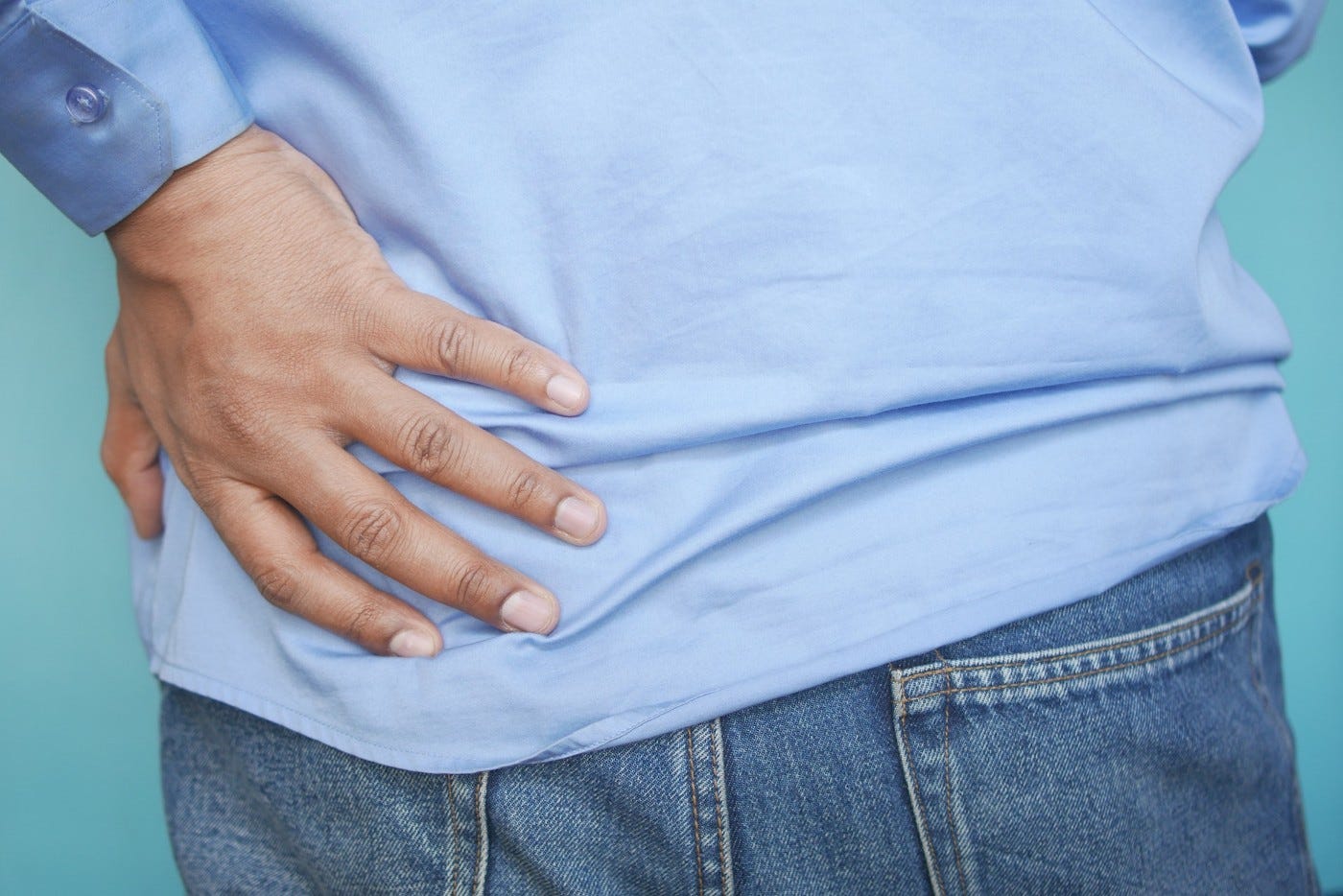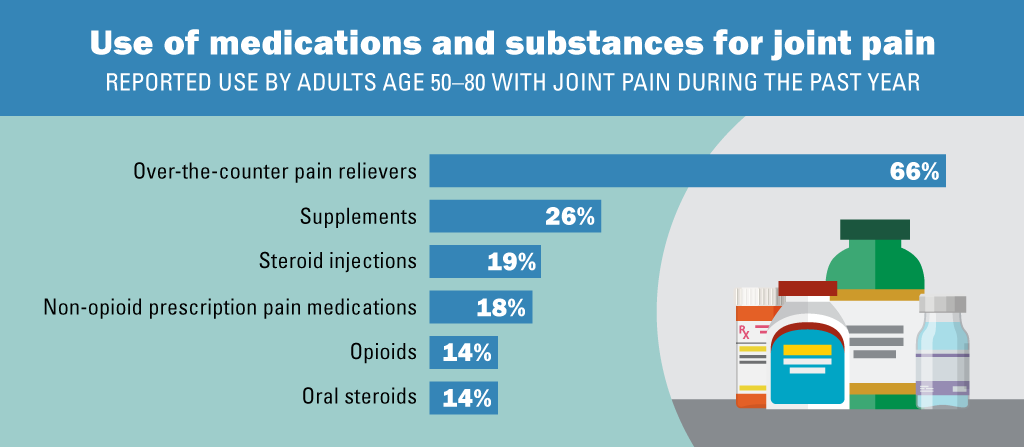Robert Roy Britt
Sep 13
5 min read

Image: Pexels/Towfiqu Barbhuiya
More than 70% of Americans 50 and older say they have joint pain, according to a new survey, and 80% of them believe arthritis and joint pain are a normal part of aging. This perception, while it holds a grain of truth, obscures a rapidly growing reality: More and more people here and around the globe ignore the №1 recommended preventive measure for arthritis: physical activity.
The need to deal with joint pain is urgent. Global cases of osteoarthritis, sometimes called “wear and tear” arthritis and the most common form of the condition, have more than doubled in the past three decades, according to a separate study published earlier this year.
While 64% of the older Americans with arthritis or joint pain say they use exercise to mitigate their pain, and 80% of them rated their exercise as helpful, more than a third of sufferers don’t exercise. Many turn to other less helpful approaches that come with potentially serious side effects.
From the new national survey of 2,277 U.S. adults, conducted by the University of Michigan:

Credit: University of Michigan
“There are sizable risks associated with many of these treatment options, especially when taken long-term or in combination with other drugs,” said one of the co-authors of the survey report, Beth Wallace, MD, a clinical rheumatologist and assistant professor in internal medicine at the University of Michigan. “Yet 60% of those taking two or more substances for their joint pain said their health care provider hadn’t talked with them about risks, or they couldn’t recall if they had. And 26% of those taking oral steroids hadn’t talked with a provider about the special risks these drugs bring.”
Even ibuprofen and acetaminophen, common over-the-counter pain relievers, have side effects, including an increased risk of gastrointestinal bleeding and heart attack, especially if taken frequently or in high doses. Ibuprofen has also been shown to alter a person’s perception of risk. Plain old aspirin can cause internal bleeding and reduce blood’s ability to clot external wounds.
In the survey, 26% of people with joint pain said they take supplements like glucosamine or chondroitin, while 11% use cannabidiol and 9% use marijuana.
While cannabis products show promise for treating pain, their effectiveness and long-term safety remain questionable. Supplements, which are not regulated and typically not well studied, are largely a waste of money for most people, a recent report concluded.
Osteoarthritis can afflict feet, knees, hips, the lower back, neck and hands.
Exercise helps prevent arthritis and lessen pain in several ways. It strengthens muscles that support joints, improves range of motion, and improves balance. A combination of physical activity and improved diet can help people lose weight, which is also helpful, since excess weight puts a strain on joints that can cause or exacerbate arthritis.
The message from top doctors, scientists and medical organizations: Look to physical activity, healthy eating and other lifestyle remedies before turning to drugs, and have a serious conversation with your healthcare provider before leaning into any medications. Many experts say doctors should actually prescribe diet and exercise for chronic pain and many other health conditions.
And a growing number of doctors and professional medical societies are recognizing the value of such “lifestyle medicine” over pharmaceuticals.
The dramatic increase in arthritis in recent decades coincides with people becoming less active, not more active. And while genetics play a role in an individual’s risk for arthritis, obesity, lack of physical activity and highly processed foods are significant factors, Lieberman writes in his book Exercised: Why Something We Never Evolved to Do Is Healthy and Rewarding.
Lieberman dismisses the myth that running or other physical activity causes arthritis.
“Despite what many doctors and others assume, more than a dozen careful studies show that nonprofessional runners are no more likely to develop osteoarthritis than non-runners,” he writes. “In fact, running and other forms of physical activity help promote healthy cartilage and may protect against the disease.”
Harvard scientists agree: “If there’s one osteoarthritis treatment an individual with osteoarthritis should do every day, it’s exercise. Regular exercise strengthens muscles and improves flexibility and balance. It not only helps ease pain and stiffness but also improves overall health. It’s also good for your mood and for staving off other conditions prevalent in older age.”
Yes, exercise can seem like the last thing you want to do when you’re in pain. Experts advise starting out with a little walking, or some other not-too-strenuous activity, and building up your effort gradually. And whether you’re young or old, in pain now or not, they all agree there’s no better time to get moving than today, not just to lower your risk of joint pain but to improve your mood and physical health overall.
Sep 13
5 min read
Arthritis Cases Skyrocket as №1 Remedy is Often Ignored
Painkillers and supplements are tempting go-to treatments, despite health risks and sketchy effectiveness

Image: Pexels/Towfiqu Barbhuiya
More than 70% of Americans 50 and older say they have joint pain, according to a new survey, and 80% of them believe arthritis and joint pain are a normal part of aging. This perception, while it holds a grain of truth, obscures a rapidly growing reality: More and more people here and around the globe ignore the №1 recommended preventive measure for arthritis: physical activity.
The need to deal with joint pain is urgent. Global cases of osteoarthritis, sometimes called “wear and tear” arthritis and the most common form of the condition, have more than doubled in the past three decades, according to a separate study published earlier this year.
While 64% of the older Americans with arthritis or joint pain say they use exercise to mitigate their pain, and 80% of them rated their exercise as helpful, more than a third of sufferers don’t exercise. Many turn to other less helpful approaches that come with potentially serious side effects.
From the new national survey of 2,277 U.S. adults, conducted by the University of Michigan:
Credit: University of Michigan
“There are sizable risks associated with many of these treatment options, especially when taken long-term or in combination with other drugs,” said one of the co-authors of the survey report, Beth Wallace, MD, a clinical rheumatologist and assistant professor in internal medicine at the University of Michigan. “Yet 60% of those taking two or more substances for their joint pain said their health care provider hadn’t talked with them about risks, or they couldn’t recall if they had. And 26% of those taking oral steroids hadn’t talked with a provider about the special risks these drugs bring.”
Even ibuprofen and acetaminophen, common over-the-counter pain relievers, have side effects, including an increased risk of gastrointestinal bleeding and heart attack, especially if taken frequently or in high doses. Ibuprofen has also been shown to alter a person’s perception of risk. Plain old aspirin can cause internal bleeding and reduce blood’s ability to clot external wounds.
In the survey, 26% of people with joint pain said they take supplements like glucosamine or chondroitin, while 11% use cannabidiol and 9% use marijuana.
While cannabis products show promise for treating pain, their effectiveness and long-term safety remain questionable. Supplements, which are not regulated and typically not well studied, are largely a waste of money for most people, a recent report concluded.
That’s why…
The American College of Rheumatology recommends exercise and other physical activity above all other remedies for osteoarthritis. Weight loss is also atop the list of go-to measures for preventing and managing arthritis. Other options, which physicians can help recommend, include joint braces, acupuncture and yes, medications used properly under the guidance of a medical professional.Osteoarthritis can afflict feet, knees, hips, the lower back, neck and hands.
Exercise helps prevent arthritis and lessen pain in several ways. It strengthens muscles that support joints, improves range of motion, and improves balance. A combination of physical activity and improved diet can help people lose weight, which is also helpful, since excess weight puts a strain on joints that can cause or exacerbate arthritis.
The message from top doctors, scientists and medical organizations: Look to physical activity, healthy eating and other lifestyle remedies before turning to drugs, and have a serious conversation with your healthcare provider before leaning into any medications. Many experts say doctors should actually prescribe diet and exercise for chronic pain and many other health conditions.
And a growing number of doctors and professional medical societies are recognizing the value of such “lifestyle medicine” over pharmaceuticals.
What our ancestors can tell us
There’s no denying that arthritis is part of the human condition. Studies of skeletons show it affected humans going back for millions of years, and Neanderthals, too, says Harvard evolutionary biologist and paleoanthropologist Daniel E. Lieberman, PhD.The dramatic increase in arthritis in recent decades coincides with people becoming less active, not more active. And while genetics play a role in an individual’s risk for arthritis, obesity, lack of physical activity and highly processed foods are significant factors, Lieberman writes in his book Exercised: Why Something We Never Evolved to Do Is Healthy and Rewarding.
Lieberman dismisses the myth that running or other physical activity causes arthritis.
“Despite what many doctors and others assume, more than a dozen careful studies show that nonprofessional runners are no more likely to develop osteoarthritis than non-runners,” he writes. “In fact, running and other forms of physical activity help promote healthy cartilage and may protect against the disease.”
Harvard scientists agree: “If there’s one osteoarthritis treatment an individual with osteoarthritis should do every day, it’s exercise. Regular exercise strengthens muscles and improves flexibility and balance. It not only helps ease pain and stiffness but also improves overall health. It’s also good for your mood and for staving off other conditions prevalent in older age.”
Yes, exercise can seem like the last thing you want to do when you’re in pain. Experts advise starting out with a little walking, or some other not-too-strenuous activity, and building up your effort gradually. And whether you’re young or old, in pain now or not, they all agree there’s no better time to get moving than today, not just to lower your risk of joint pain but to improve your mood and physical health overall.
